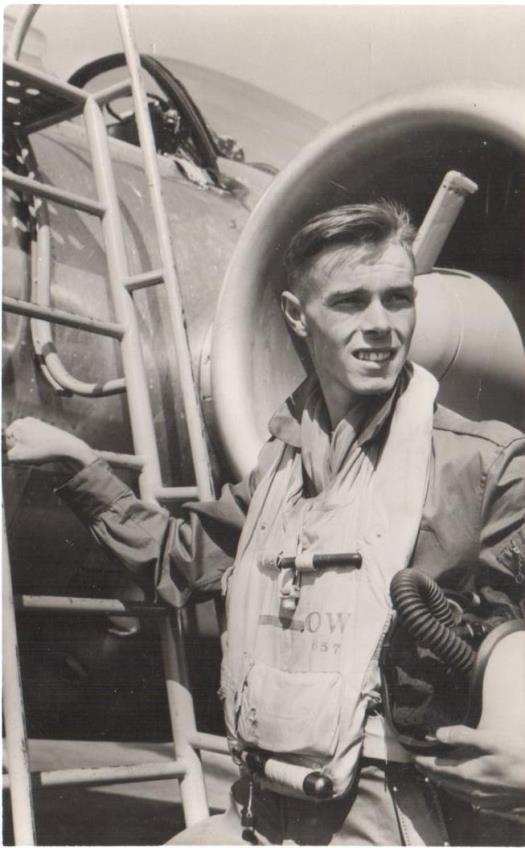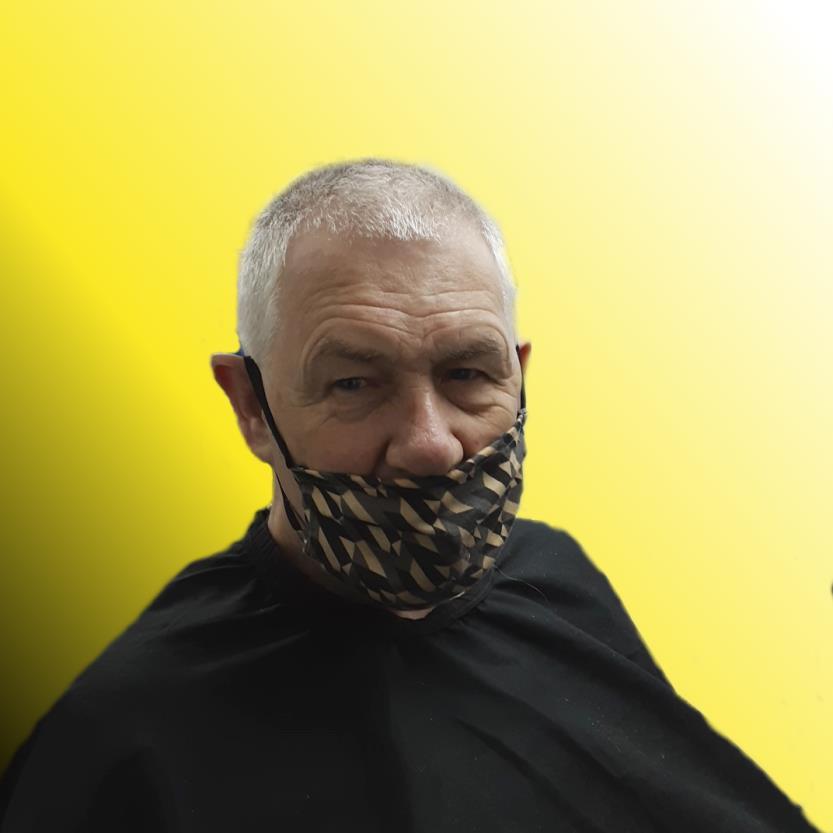
7 minute read
The solid metal Gordon Highlander
The solid metal Gordon Highlander
A set of metal solider figurines and a miniature Fort George have recently been reminding Jim Bogan of his army days. Given the injuries Jim sustained in his service, many might wonder if Jim is made of metal himself.
The Elgin resident served in the Cameronians rifle regiment and the Gordon Highlanders regiment in the late 1960s and the 1970s. He served in Libya, Cyprus and Germany, and did four tours of Northern Ireland.
During one tour of Northern Ireland, Jim was ambushed by the IRA. His assailants tore open his flak jacket and knifed him in the stomach. But Jim wasn’t done. Thanks to his fellow soldiers, the Gordon Highlander survived. He spent three months in hospital, and lived to march another day. Mick Hilton, Jim’s Outreach Worker at Sight Scotland Veterans, offered to build a display fort out of reclaimed wood for Jim. Mick dropped it off in December 2020, to Jim’s delight.
“It’s absolutely splendid,” Jim said.
“It’s very real looking and the whole set up is my pride and joy.” Jim’s wife, Julie, said the couple were very grateful for Mick’s efforts.
Over the years, Jim has collected scores of diecast metal Gordon Highlander toy soliders. Jim now has 24 Gordon Highlander figurines, six Black Watch figurines, four canons and 16 other figurines made by the renowned W. Britain toy company. Jim kept the soldiers in their boxes for years, but during the lockdown, the 73-year-old decided
“His weekly calls have been a godsend for us and have kept Jim going. Mick is such a lovely man and a true asset to Sight Scotland Veterans.”
Jim’s figures are now lined up on display on the fort, parading for a 2 -inch tall Queen Victoria. The fort display reminds Jim of his training in the 1960sm where he was based out of Fort George. As Julie tells, Mr Bogan gained the nickname “Toboggan Bogan” while on an SAS training exercise in the west coast.
“While out on a training manoeuvre with the SAS, Jim slipped down a 3,000 ft tall mountain in his sleeping bag,” Julie said.
“One chilly night, Jim had snuggled into his sleeping bag on a grassy hill near the top. Suddenly, he found himself slipping and sliding down the mountain, as gravity overcame the minimal friction between the bag and the grass.
“Gorse and bracken eventually brought Jim’s slide down the mountain to a stop. The officers thought they would find his dead body at the bottom, but Jim survived it. “He just had no sleeping bag, or backside, and very raw feet.”
Julie said Jim “Toboggan” Bogan took adventures like these in his stride.
”He’s had a tough, tough life but he has always got a smile.” A metal soldier indeed!
Image shows Jim Bogan leaning over his collection of painted Gordon Highlander metal toy soldiers.
Image shows metal W. Britain soldiers lined up around a square fort.

Navigating the airways of the Arctic
Air Force (RCAF), where he trained further to navigate on all-weather fighter planes.
When technology doesn’t cut the mustard, the old ways can prove reliable.
Robert Macdonald certainly found this to be the case when he flew to the Arctic Circle with the Canadian Armed Forces’ Search and Rescue.
Robert is a Sight Scotland Veterans member who is lives in Kirkcaldy. Robert, who goes by Bob, did National Service in the 1950s and trained as a navigator. Bob then transferred to the Royal Canadian As a navigator on fighters, Bob would sit behind the pilot and work with ground control radar to intercept unknown or unfriendly aircraft.

“In those days, we didn’t have GPS or satellites or anything. We used a compass, a sextant and maps to navigate,” Bob said.
Bob served on several two-seater RCAF aircraft. These included the CF-100 twinjet interceptor fighter, which was similar to the Royal Air Force’s Gloster Meteor Mk 14, and the McDonnell CF-101 Voodoo allweather interceptor, which could fly at supersonic speeds.
Image shows Bob Macdonald as a young man standing beside one of the Royal Canadian Air Force’s CF-100 twinjet interceptor fighters.
“Originally, the ground control radar's radio call sign was ‘Yellow Jack’. But when I did a tour as a Ground Controller, I soon became ‘Yellow Jock’, on account of my Scottish accent,” Bob said.
In the CF-100, Bob’s aircraft was tasked with monitoring the airspace above France and Western Europe to intercept Russian bombers.
“The CF-100 was armed with eight 50 Calibre machine guns and 58 air -to-air rockets,” Bob said.
“I was the navigator and radar operator, sitting behind the pilot. I’d be guided by the ground control to a target. Then, about 30 miles out, we’d pick the target up on the plane’s radar. Anything above 30,000 feet was military in those days,” Bob said.
“On one mission, we were committed to an aircraft heading to Paris that was dropping chaff, which are little bits of tinsel to block out radar monitoring.
”We flew past at 300 knots overtake and then drew alongside them. It was a big black B-50 bomber. It had no markings on it at all which was very suspicious.
“We reported it and contacted the Ground Control who, after a short time, told us to abort and break off. We tried: ‘Authenticate authenticate, romeo romeo…’, but soon came the rude reply to break off at once. We trailed them for some time… They were dodging into the clouds, trying to get away, but we stuck with the B-50 in close formation. I got a rap over the knuckles for that. I suspect it was a CIA plane,” he said.
Search and rescue
Bob also served as a navigator on search and rescue missions run by the Royal Canadian Air Force. The Scotsman’s navigation skills were put to the test while flying to the Arctic Circle in a Grumman CSR-110 Albatross flying boat.
“In January 1964, we flew 2000 miles from Winnipeg to a small settlement on Ellesmere Island to rescue an Inuit woman who had given birth and had serious complications,” Bob said.
“Because we were so far north, at the 80th parallel north, there were 24 hours of darkness every day. The Albatross was a slow plane, going just 110 knots (127 mph), so it was a 15-hour flight in the dark.” The darkness made it impossible to see the landscape and the proximity to the North Pole rendered the magnetic compass useless.
”A compass is of no value close to the magnetic pole, so we steered by giro. It’s quite a complicated business. All the longitude lines get closer and closer together. Eventually, though, there’s no point in using the North pole as a guiding point.” When the compass failed to be useful, Bob relied on a much older method of navigation.
“In the Arctic Circle, all you have for guidance are the stars,” Bob said. Bob and the crew shared their extra food supplies with the Inuit children.
“I got the kids all lined up and they all got their banana and their apple. They were beautiful kids with big brown eyes,” Bob said.
”I’ve since received an email from one of those kids, now grown up, telling me he remembers that visit. He said that was the first time he’d seen a banana, and he didn’t know he was supposed to peel it. Incomplete briefing on my part.”
“You knew where the stars would be at a certain time, and so you’d navigate with them and a periscopic sextant. We also used an astrocompass. Using three star fixes, we got there.” The rescue crew stayed at Grise Fiord for several hours so the Search and Rescue doctor and nurse could stabilise the mother, Annie, and baby Sula.
The mother and baby to be rescued were at a small settlement called Grise Fiord. At first, the rescue plane’s pilot struggled to find a landing spot in the darkness.
“All of a sudden, there were all these lights lighting up on the ice. They had taken out oil lamps so we knew where to land,” Bob said.
“All the inhabitants came out to greet us, including a bunch of kids. The kids were clad in fur-rimmed parkas and enormous eyes poked out of their lovely faces.” Next, Annie and Sula were taken to an American military hospital at Thule Air Base in Greenland. After two days the newborn was strong enough, so the rescue crew flew the mother and baby to Winnipeg for specialist treatment.
“We intended to fly directly back to Winnipeg but had to stop at Fort Churchill at the south of Hudson's Bay to evacuate a very ill young girl,” Bob said.
“We set off at Buster (max continuous speed) and the aircraft was vibrating like I had never known.






